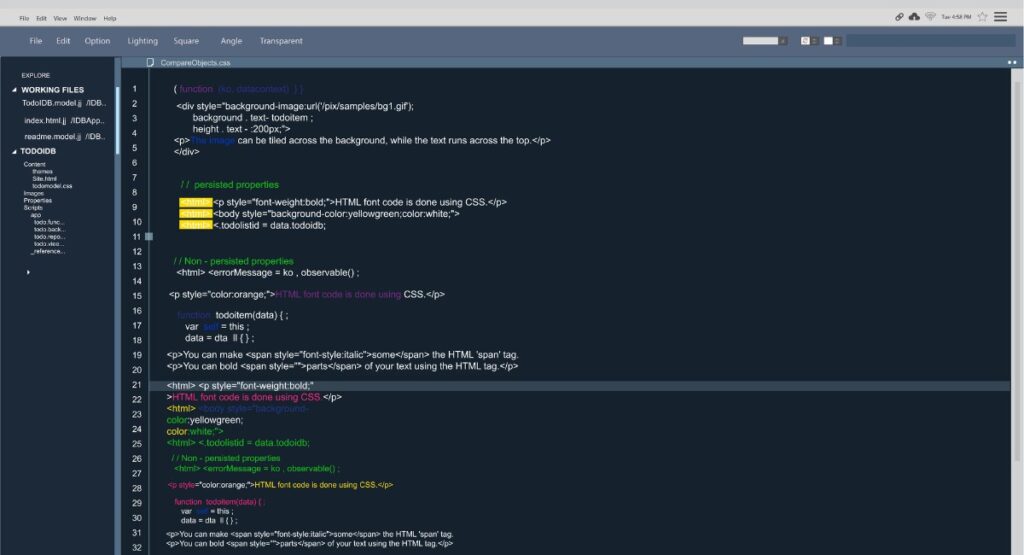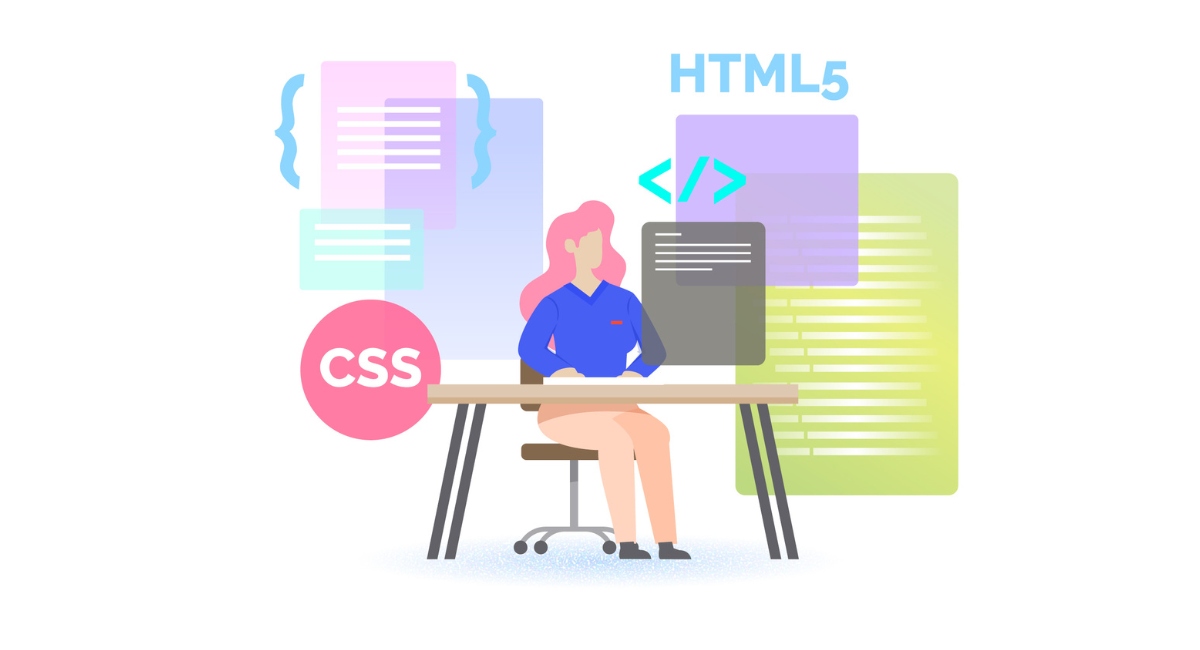CSS Border (Cascading Style Sheets) is a powerful tool for web developers and designers aiming to enhance the appearance and interactivity of their websites.
Among the various properties that CSS offers, border styles play a crucial role in defining the look and feel of web elements. Understanding how to manipulate CSS border styles can significantly improve the aesthetics and user experience of a website.
This guide will delve deep into the various aspects of CSS border styles, providing you with the knowledge to master this element and incorporate it into your web development projects.
Whether you are a beginner looking to understand the basics or an experienced developer aiming to refine your skills, this comprehensive guide will equip you with the tools you need to effectively utilize CSS borders in your designs.
Understanding CSS Border Styles
When designing web pages, borders can be a crucial visual and structural component. CSS offers several border styles to help define the edges of various elements on the page, each style having its unique effect.

Solid Border Style
The solid border is one of the most commonly used border styles. It provides a single, uniform line around an element, making it perfect for creating definitions and separations between different sections of a webpage.
To apply a solid border, you can use the CSS property and value: \`border-style: solid;\`. This style is favored for its clarity and simplicity, making it a go-to option for many developers looking to achieve a clean and straightforward look.
Dashed Border Style
A dashed border style offers a more decorative look, consisting of a series of short lines or dashes. This style is particularly used to draw attention or to signify a provisional boundary within the UI design.
It is implemented with the CSS property: \`border-style: dashed;\`. Dashed borders are ideal for wrapping around elements that need a visual emphasis that is less intense than a solid line but more distinct than other subtler styles like dotted borders.
Dashed Border Style
The double border style sets two parallel borders with some space between them, giving it a unique and noticeable outline. This is particularly useful in designs requiring a more sophisticated or enhanced visual appeal.
To use it, specify \`border-style: double;\` in your CSS. The double style is effectively utilized in certificates, promotional banners, or as a means of highlighting key information within a site.
Implementing CSS Border Styles
Once you are familiar with the various border styles, the next step is to apply these styles within your web pages to improve layout and design.
Adding Borders to HTML Elements
Adding borders in CSS is straightforward. Simply select the HTML element you wish to add a border to and use the \`border\` property in your CSS stylesheet. For instance, to add a solid border to a paragraph, your CSS would look as follows:
\`\`\`css
p {
border: 1px solid black;
}
\`\`\`
This property defines a black solid border with a width of 1px around the paragraph element.
Customizing Border Width and Color
To further tailor the appearance of borders, CSS allows customization of border width and color. The width of the border can be set using the \`border-width\` property, and the color can be defined using the \`border-color\` property.
You can specify these properties separately or within the shorthand \`border\` property like this:
\`\`\`css
div {
border: 2px dashed blue;
}
\`\`\`
Here, a 2-pixel-wide, dashed, blue border is applied to all \`div\` elements.
Creating Border Radius
CSS also enables rounded borders with the \`border-radius\` property, adding a softer and more aesthetic touch to elements.
This is especially popular for creating button-like features or friendly interface components. The \`border-radius\` can be applied to all corners of the wreckag...
\`\`\`css
button {
border: 2px solid green;
border-radius: 8px;
}
\`\`\`
This CSS code applies a solid, green border with a radius of 8 pixels to buttons, making them more visually appealing and user-friendly. These modifications not only enhance the look and feel but also contribute to a more modern and engaging user interface.
Advanced CSS Border Style Techniques
Border Styles with Images
Using images for borders in CSS can add a unique and creative touch to any element on your website. The \`border-image\` property allows you to specify an image to use instead of the standard line style.
To use this property effectively, you need to define the source image and then set how this image should fill the border. The syntax includes \`border-image-source\`, \`border-image-slice\`, \`border-image-width\`, \`border-image-outset\`, and \`border-image-repeat\`. For example:
\`\`\`css
.element {
border-image-source: url('path/to/image.jpg');
border-image-slice: 30%;
border-image-repeat: repeat;
}
\`\`\`
This method slices the specified image and uses it to surround the element, repeating where necessary. It’s vital to ensure that the image is high quality and appropriate in size to avoid any layout issues.
Gradient Borders
Gradients can also be applied to borders, offering a smooth transition between colors which can make elements stand out impressively.
CSS allows linear or radial gradients to be used as border images, but setting them up requires careful handling through \`border-image\` property using gradient functions. A typical implementation would look like this:
\`\`\`css
.element {
border: 10px solid transparent;
border-image-source: linear-gradient(to right, red, yellow);
border-image-slice: 1;
}
\`\`\`
This setup creates a seamless gradient transition in the border from red to yellow, enhancing visual aesthetics. Gradients are purely CSS-driven, so they don't add any extra weight to the page as images do.
Animating Border Effects
Animating CSS borders can add dynamic interactions and surprise elements to your page. CSS animations can be applied to border properties to change styles, colors, or positions over time. For instance, you can create a hover effect that changes the border color gradually:
\`\`\`css
.element {
border: 3px solid blue;
transition: border-color 0.5s ease;
}
.element:hover {
border-color: green;
}
\`\`\`
Using CSS keyframes, more complex animations such as pulsing or rotating borders are also possible, increasing the interactivity of your webpage.
Best Practices for Using CSS Border Styles
Consistency in Border Styles
When applying borders across your website, maintaining consistency is critical. Consistent border styles help in maintaining a clean and professional look.
Decide on a set of style rules for border width, color, and type, and apply these consistently across similar elements. This approach not only enhances the aesthetic appeal but also aids in creating a cohesive brand identity.
Performance Considerations
While CSS borders are generally lightweight, misuse, especially with complex images and animations, can impact your website's performance.
Use borders judiciously, ensuring they do not hinder the page's load time or affect the responsiveness. Optimize border images for the web and prioritize CSS-based solutions over image files whenever possible.
Cross-Borrower Compatibility
Browser compatibility is a crucial aspect to consider when using advanced CSS border styles. Not all properties are supported equally across all browsers, which could lead to inconsistent designs on different platforms.
Always test border styles in multiple browsers to ensure they look and function as intended. Utilizing CSS prefixes and fallbacks where necessary can help maintain a consistent appearance across diverse web environments.
Book a Demo and experience ContextQA testing platform in action with a complimentary, no-obligation session tailored to your business needs.
Conclusion
CSS border styles are an integral part of web design, offering a simple yet powerful way to visually enhance user interfaces. By mastering the properties of CSS borders, developers can create more appealing and distinct designs that stand out in the digital space.
Experimentation and practice are key in utilizing these styles effectively, as they can significantly alter the aesthetics and usability of your web pages.
Embrace these styles to better frame content, highlight elements, and guide user interactions positively on your website.
Also Read - Python ConfigParser Tutorial – Comprehensive Guide To Working With Configuration Files With Python
